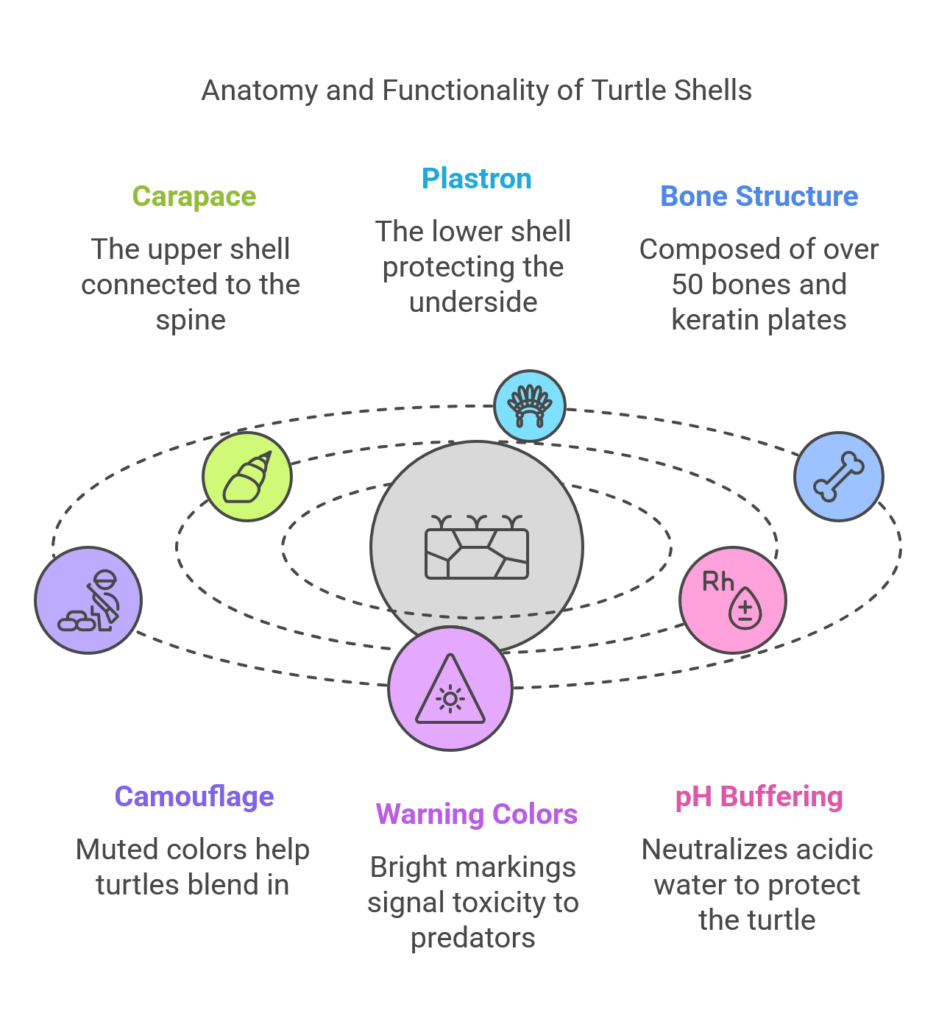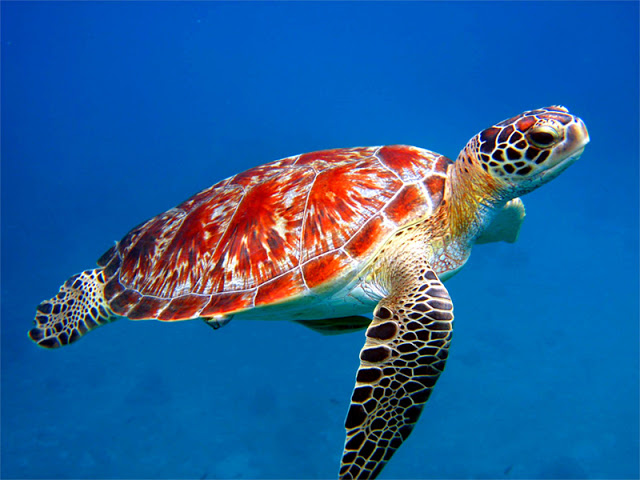We use affiliate links to run our site. When you buy through links on our site, we may earn an affiliate commission, without any added cost to you. Learn more
A creature that can carry its home on its back, live for over a century, and has been roaming the Earth since the time of dinosaurs. That’s the incredible world of turtles!
With their unique adaptations and behaviors, turtles are more than just cute reptiles; they play crucial roles in maintaining healthy ecosystems.
In this article, we’ll explore 11 fascinating facts about turtles that will not only enhance your knowledge but also inspire you to appreciate these remarkable animals even more. Get ready to discover why turtles deserve a special place in our hearts and minds!
Turtles And Tortoises Are Different
Let’s set the record straight right off the bat: while turtles and tortoises may seem similar, they’re actually quite different.
Turtles are the surfing champions of the reptile world—sleek and always close to water. On the other hand, tortoises are land explorers, wandering through deserts and forests with sturdy legs and a love for greens.
Turtles have flippers or webbed feet to help them glide through oceans and rivers (and many enjoy a varied diet!), while tortoises have chunky feet made for trudging on land and nibbling on plants.

This post is all about turtles.
Interesting Facts About Turtles

1. Turtles Outlived the Dinosaurs
Turtles are one of the oldest reptile groups, i.e, much more ancient than Dinosaurs, Snakes, or Crocodiles, and are characterized by a special bony or cartilaginous shell which acts as a shield.
The earliest known turtle dates from 220 million years ago. While dinosaurs faced extinction from asteroids, turtles just kept going. What’s their secret? Those famous shells and an incredible ability to adapt
2. Their Shells Are Actually Part of Their Skeleton
A turtle’s shell isn’t just armor; it’s a built-in part of their body! It’s connected to their spine and ribs and made up of more than 50 bones, all covered by keratin plates—yep, the same stuff as your hair and nails.
So, no, they can’t just slip out of it; it’s literally part of them. Imagine if your house were part of your skeleton!
The upper portion of the shell is called the carapace, whereas the lower portion is called the plastron.
The colors of their shells serve a purpose—muted greens and browns help camouflage sea turtles, while bright red or yellow markings send a warning to predators: “Stay away, I’m toxic!”. Plus, the shell acts as a pH buffer, neutralizing acidic water.

3. Turtles: Shedding Skin, Not Shells!
Did you know that turtles, like snakes, shed their skin? But here’s the catch: they don’t lose it all at once. Instead, they shed it in little patches. Think of it like peeling off tiny bits of sunburn—kind of gross, right?
But, unlike their skin, turtles’ shells don’t just fall off or get replaced. Instead, they have special layers called scutes that wear down over time or grow gradually. It’s similar to how tree rings show age; you can learn a lot about a turtle just by looking at its shell!
4. Turtles can vary hugely in size: from Teacup Titans to Ocean Giants
Turtles come in all sizes. The tiny speckled padloper tortoise is only about 8 cm long—small enough to fit in your hand! On the flip side, leatherback sea turtles can reach lengths of up to 2 meters and weigh around 900 kg—that’s like having a small car swimming alongside you!
And did you know a group of turtles is called a “bale”? Just like a bale of hay, but way cuter!
5. Turtles Are Cold-blooded animals
Turtles are ectothermic (cold-blooded animals), which means they don’t produce body heat like we do. Their internal body temperature varies according to the environment.
Ever seen one lounging on a rock? They’re just catching some rays to energize their day.
But don’t be fooled by their “cold” label; their slow metabolism lets them survive for months without eating. (And yes, box turtles can hibernate underwater by breathing through their rear ends—more on that later!)
6. Turtles Don’t Have Teeth, but They Can See In The Darkness
Turtles see the world in a unique way! Their eyes are packed with rod cells that give them excellent night vision. This helps them glide through murky waters or walk on moonlit beaches like stealthy ninjas.
Forget about teeth; turtles have beaks and have jaws with ridged edges that are great for crushing jellyfish (if they eat meat) or tearing up seaweed (if they prefer plants). Unlike most reptiles, their tongues are sticky tools meant for swallowing food, not for catching it.
7. Turtles Don’t Have Feet, Instead They Got Flippers
Sea turtles are champions of swimming, using flippers to glide through water at speeds of up to 35 km/h (not quite as fast as 35 mph, but still impressive!).
Freshwater turtles have webbed feet that act like swimming fins for paddling in ponds and climbing onto logs. Tortoises, however, have club-like feet built for digging rather than swimming.
8. Some Turtles Breathe Through Their… Rear Ends
You heard that right! Certain species, like the Australian Fitzroy River turtle, can breathe through their cloaca—their multi-purpose backside! This unique ability allows them to stay underwater for days while hibernating. Isn’t nature bizarre?
9. Baby Turtle Genders Depend on Temperature
Though most turtle species live in water, they need air for breathing and need to come to land to lay eggs.
Interestingly, mother turtles don’t care for their young. They bury eggs in sand or mud and leave them to incubate alone. When the turtles hatch, they squirm their way to the surface and head toward the water.
Only 1 or 2 out of 1000 turtle hatchlings grow to adulthood.

Did you know: the sex of most baby turtles is determined by the temperature of their nest. If it’s warm, you get more females; if it’s cooler, more males.
With climate change causing higher temperatures, scientists are concerned about too many females in the population. Turtles are like nature’s first climate warriors!
The turtle eggs are peculiar in comparison to our well-known birds’ eggs. The albumin portion of the eggs contains different proteins, and so it does not coagulate when cooked.
10. They Have Built-In Navigation Skills
Leatherback sea turtles travel thousands of miles across oceans and return to the exact beach where they hatched to lay their eggs. How do they do this? They can sense the Earth’s magnetic field like a compass. Forget Google Maps; turtles have their own GPS!
11. They Cry… But Not Out of Sadness
Ever seen a sea turtle shed tears? Don’t worry; they’re not sad! Those tears are simply how they get rid of excess salt from seawater. Special glands near their eyes filter out the salt, keeping them hydrated.
Turtles In A Nutshell
Why Turtles Need Our Help
Turtles are incredible creatures, but they’re in big trouble. Plastic pollution, loss of their homes, and poaching are all putting them at risk.
But there is good news. You can make a difference!
Here’s how:
1. Cut Down on Plastic: Every time you use a plastic straw or bag, remember that turtles might mistake them for jellyfish—a food they love. Instead, opt for reusable options. It’s an easy swap that could save a turtle’s life!
2. Keep Our Beaches Clean and Dark: When you visit the beach, do your part by cleaning up after yourself. Also, bright lights can confuse baby turtles when they’re hatching. Keep the area dark so they can find their way to the ocean safely.
3. Support Conservation Efforts: Organizations like WWF and The Sea Turtle Conservancy are fighting hard to protect these amazing animals. Donating or volunteering with them is a powerful way to contribute.
Recently almost all sea turtles have been included in the endangered species list. Let us take some steps to save these beautiful and unique creatures.
Hope you enjoyed the article. Thanks for reading.
Amazon and the Amazon logo are trademarks of Amazon.com, Inc, or its affiliates.

Thanks for which will make my life just a little less difficult. Can wait to see your next post keep it up :-).
*You made some decent points there. I looked on the internet for the issue and found most individuals will go along with with your website.